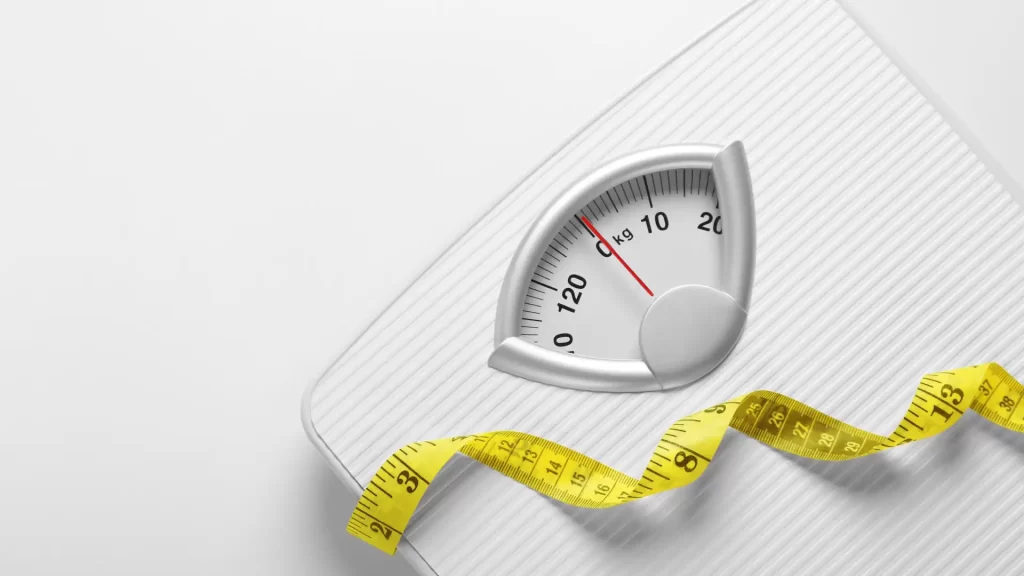Our weight has a significant impact on many elements of our health. This function, which may even influence our vulnerability to certain diseases, needs continual monitoring to assess whether we are within a healthy range.
As a screening tool, BMI stands out because it allows us to get critical data about our health quickly, conveniently, and reliably. This comprehensive blog about the role of BMI, how it is calculated, and its relevance to surgical operations will serve as a guide that broadens your perspectives. Continue reading!
What is BMI?
Body Mass Index is an abbreviation for Body Mass Index. It is a numerical figure derived from a person’s height and weight that is used as a basic screening tool to classify individuals into various weight groups.
BMI is a popular metric for determining if a person is underweight, normal weight, overweight, or obese. Healthcare practitioners use it to acquire an approximate estimation of a person’s entire body composition and to assist in detecting potential health hazards connected with being underweight or overweight.
Why Use BMI?
BMI is useful for a multitude of reasons. As an example:
- For Screening: BMI is frequently used as a screening technique to identify potential weight-related health concerns. It can assist in identifying persons who may be underweight, overweight, or obese, requiring further examination and management.
- Health Risk Evaluation: While BMI may not offer an accurate picture of a person’s health, it is linked to specific health concerns. Individuals with a high BMI, for example, are more prone to develop illnesses such as type 2 diabetes, heart disease, and certain malignancies.
- Tips on Diet and Exercise: Individuals wishing to enhance their health might use BMI as a starting point. While not a diagnostic tool, it can assist people in establishing early weight loss goals and guiding them toward healthier lives.

How to Measure BMI?
BMI is calculated by taking your weight in kilograms and dividing it by your height in meters squared. The resultant value predicts your body fat percentage and can be used as a preliminary screening tool for surgical treatments such as liposuction for high BMI.
- Men: A man’s optimum body weight is determined by a variety of characteristics, including height, age, body composition, and general health. Despite the fact that the parameters used differ, BMI estimations are produced in the same way for both genders. As a result, guys have no BMI calculator.
- Women: Women’s health and weight status can be influenced by variables such as hormonal changes during different life phases (e.g., pregnancy, menopause) and differences in body composition. Aside from that, the ranges we just indicated apply to all adults. Is there a female BMI calculator? There isn’t any. Any adult, regardless of gender, can utilize the same calculation processes.
- Teenagers: Body Mass Index (BMI) is another metric used to assess adolescent weight status, and it may be a useful tool for healthcare practitioners and parents to track their adolescent’s growth and development. Teenagers’ BMI is calculated by measuring their weight in kilos and their height in meters, much as adults. However, it’s crucial to note that fast growth and changes in body composition are normal during adolescence, and individual diversity is significant.
- Children: Because children develop at varying rates, it is a weight for height measure for them when compared to other children their age. During your appointment, a pediatrician will weigh and measure your kid while they are clothed.

What are BMI Categories?
Individuals are classified into distinct weight status groups based on their BMI readings using BMI categories. Adults, youths, and children are often classified in the same categories, which are as follows:
- Underweight: BMI less than 18.5
- Normal weight: BMI 18.5 to 24.9
- Overweight: BMI 25 to 29.9
- Obesity (Class I): BMI 30 to 34.9
- Obesity (Class II): BMI 35 to 39.9
- Obesity (Class III): BMI 40 or greater
Pros and Cons of Using BMI as a Weight Measurement Tool
As a screening tool, BMI has both advantages and challenges. Let’s take a look at these pros and cons together:
Pros
- Rapid Assessment: It gives a rapid evaluation of a person’s weight status and may be used as an initial screening tool.
- Indication of Health Risk: A high BMI is linked to an increased risk of various health disorders, including type 2 diabetes, heart disease, and several malignancies. It can be used to predict prospective health hazards.
- Clinical Research: Researchers and public health professionals can use BMI to investigate and track population health trends.
Cons
- Doesn’t Take Other Health Variables into Account: BMI does not account for other important health variables such as food, physical activity, heredity, or particular health issues.
- Limited Data: BMI does not take into consideration aspects such as muscle mass, body composition, or fat distribution, which might lead to inaccurate health assessments.
- Lack of Personalization: It does not take into account an individual’s unique health conditions, making it an insufficient tool for assessing overall health.
The Importance of BMI in Assessing Health Risks
BMI (Body Mass Index) is a useful screening tool for both healthcare professionals and individuals in determining health concerns. While it has limits, its value stems from its capacity to provide a rapid and simple evaluation of weight relative to height, which can provide crucial insights into a person’s possible health concerns.
- Gastric Sleeve: When establishing a patient’s eligibility for gastric sleeve therapy, BMI (Body Mass Index) is an important criterion to consider. Individuals with a BMI in the obese or extremely obese category are often candidates for gastric sleeve surgery.
Candidates for gastric sleeve surgery often have a body mass index (BMI) of 40 or greater, or a BMI of 35-39.9 with substantial weight-related health concerns, such as type 2 diabetes or hypertension. This operation is meant for people who have suffered with obesity and have not been able to lose weight permanently through conventional techniques such as diet and exercise.
- Liposuction: When contemplating cosmetic surgery and its possible ramifications for general health, BMI (Body Mass Index) and liposuction are linked. Liposuction is a surgical technique used to remove excess fat from specific parts of the body, usually for cosmetic reasons. BMI can be used to determine an individual’s appropriateness and safety for liposuction.
- Other Bariatric Surgeries: Specific BMI requirements are part of the eligibility criteria for several bariatric surgeries, including gastric bypass and gastric banding. Individuals with extreme obesity, generally with a BMI of 40 or higher, or those with a BMI between 35 and 39.9 who also have weight-related health concerns, such as diabetes, hypertension, or sleep apnea, are typically candidates for these operations.






